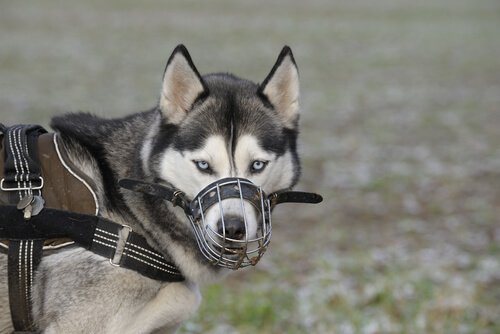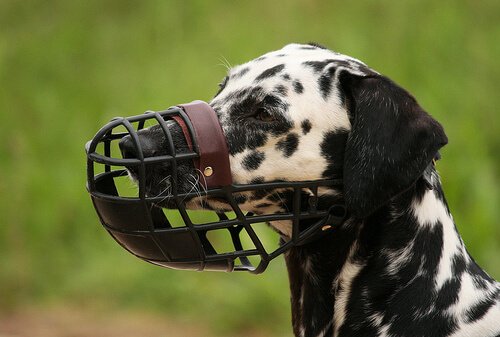When Should I Muzzle My Dog?

When should I muzzle my dog? If you love your furry friend, the idea of having to put a muzzle on him makes you feel bad. However, all the publicity that aggressive dogs get may make it necessary to use a muzzle. You should check the laws in your country, but, according to Spanish law, it’s required that certain breeds of dogs should wear a muzzle when in public places.
Know the dog breeds that need a muzzle by law

Again, each country will be different, but let’s try to understand the current law in Spain. Even if you know that your dog is the most docile animal in the world, you’ll still need to muzzle him if he belongs to one of the breeds which Spanish law deems dangerous. These are the breeds:
- Pitbull terrier
- Staffordshire bull terrier
- American Staffordshire Terrier
- Rottweiler
- Argentinian Mastiff
- Brazilian Mastiff
- Tosa Inu
- Akita Inu
The above breeds have been altered due to cross breeding. Because of this, authorities consider them to be potentially dangerous as they could retain some of their original characteristics.
Take into account that some local laws can add other breeds to the national list that they consider dangerous. So, it’s important to find out your local laws.
As unpleasant as it may seem, sometimes our dogs should be wearing a muzzle. This is especially important if they belong to one of the breeds that the law considers potentially dangerous.
Situations that may require the use of a muzzle
So, if your dog isn’t on the Spanish government’s list of dangerous dogs, the ideal thing is not to put a muzzle on him. If he’s trained correctly with patience and persistence, you won’t need to repress your dog with this despised apparatus.
However, while your dog is in the process of learning, you may need to resort to using one. It might also be necessary if he is an extremely strong dog. You may need a muzzle in the following situations:
- Taking a trip to the veterinarian: Dogs tend to become nervous in the waiting room. Also, if the veterinarian hurts him in some way, he may try to bite.
- Going to the groomer: Be aware that many dogs detest the idea of someone trimming their claws and fur.
- Going out for a walk: He may eat anything he comes across on the ground, which may even include feces of other animals. Also, he may become aggressive with other animals.
Recommendations for when I should muzzle my dog
Remember that this device is very uncomfortable. Therefore, only use it to prevent behavior that you still haven’t found a way to control. Using the muzzle as a punishment for improper behavior or to prevent excessive barking will only make the situation worse.
If you find that using a muzzle is absolutely necessary or the law requires it, remember that:
- It shouldn’t be used for prolonged periods of time.
- Someone must constantly supervise the dog while he’s wearing it. He could harm himself if he tried to remove it or he could die if he is unable to vomit.
Choosing a muzzle

Pet stores offer a variety of styles. It’s best to choose the one that is most comfortable for your dog. Above all, it should be one that allows him to open his mouth easily in order to breathe. In addition, it should be one that doesn’t cause him to overheat and won’t cause him to choke in case of vomiting.
Considering all of this, we recommend the basket type, which creates a barrier between the mouth and people, animals, and other things around him.
It’s best to use a muzzle from when they are small, especially if the dog is one of the breeds required by law to do so.
Using it for short periods of time and giving treats when you take it off are helpful hints. Praising him after taking it off is also a good idea. This way it will become associated with something positive and won’t be considered punishment.